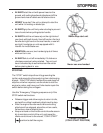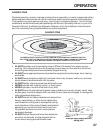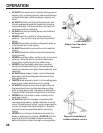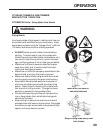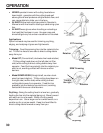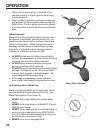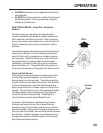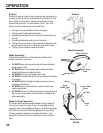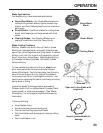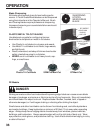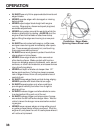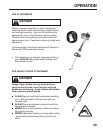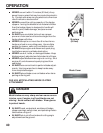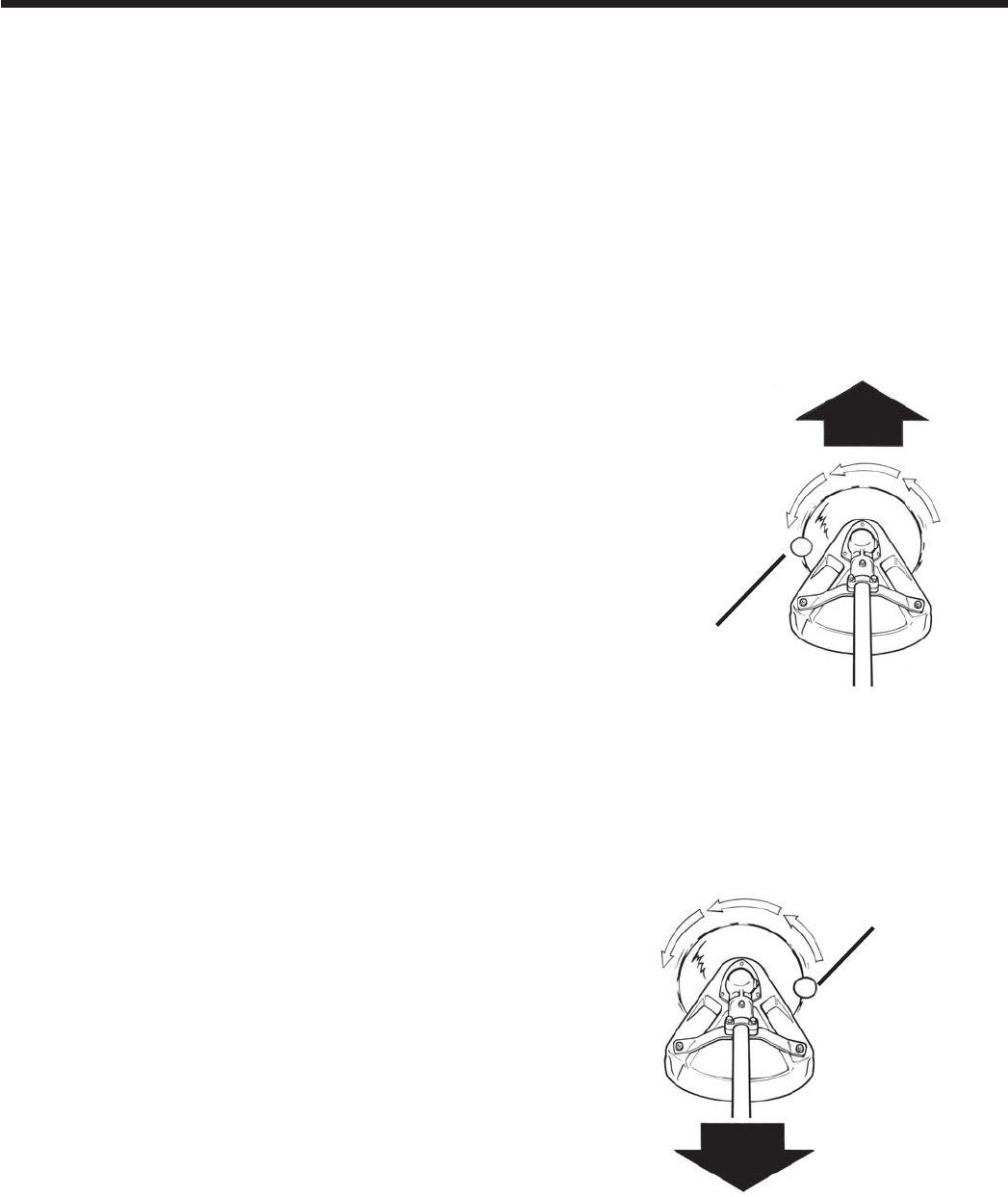
33
• ALWAYS use blade only for application for which it
was intended
• ALWAYS use the correct front handle for the type of
blade being used. Echo recommends using a U-
Handle for all blade use.
REACTION FORCES - Push/Pull - Kickback/
Kickout
During normal use, operating a brushcutter with a
circular metal blade can produce sudden strong reac-
tion forces that are difficult to control. Strong reaction
forces can cause a loss of balance or loss of control of
the unit, resulting in serious injury to operator and by-
standers.
Understanding what causes these reactive forces may
help you to avoid them, and can help you to maintain
control of the unit if you experience a sudden reaction
during cutting. Reactive forces occur when the force
being applied by the cutting teeth of a blade meet
resistance, and some of the cutting force is directed
back toward the unit. The greater the cutting force or
the amount of resistance, the greater the reactive force.
Push and Pull Forces
Push and pull forces are reactive forces that push the
unit directly toward the operator, or that pull the unit
directly away from the operator. These forces are the
result of cutting on the sides of the blade. The direction
of the force depends on the side of the blade being
used, and the direction of blade rotation at the point of
contact. The reactive force is in the opposite direction
of blade rotation at the contact point, regardless of
where the contact is being made. These types of
reactive forces are also called “Blade Thrust.”
As shown in the illustration, a blade turning counter-
clockwise will cause the unit to pull away from the
operator if the point of cutting resistance is on the left
side of the blade. If the point of cutting resistance is on
the right side of the blade, the unit will push back toward
the operator. In both examples, the reactive force is in
the opposite direction of blade rotation at the contact
point where resistance occurs.
OPERATION
PUSH
PULL
Contact
Point
Contact
Point



